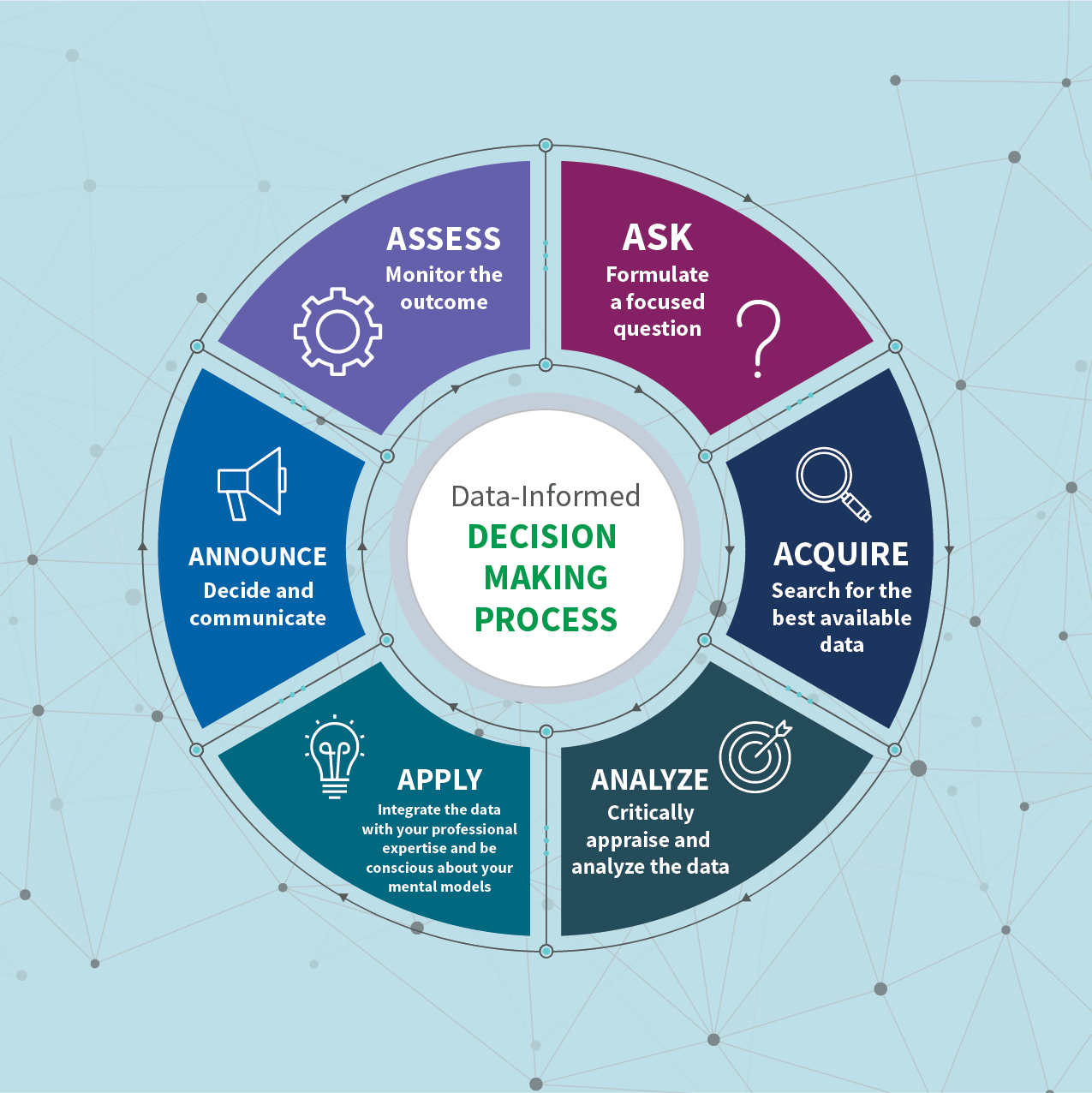
Budgets for marketing that are data-driven and optimized are critical to every business's expansion and success. Putting money into marketing may help you draw in new clients, create leads, and increase brand awareness. However, deciding how much money to spend on marketing may take time, mainly when there are tight constraints.
To maximize its efficacy, it is crucial to optimize your marketing expenditure. Additionally, data-driven budgeting makes it possible to analyze the outcomes of your marketing initiatives more precisely and points out areas for development.
Analyzing cost-benefit statistics will help you optimize your efforts and set aside funds appropriately. With this strategy, you can be confident that your marketing efforts are yielding tangible results and that your resources are being spent as efficiently as possible. In this article, we will discuss how to make better data-informed decisions for marketing budget allocation.
What Is Marketing Budget Allocation?
The amount of money allotted by a company to every expense item in a marketing strategy is known as the marketing budget allocation. It is a cap on the amount of money that staff members are unable to charge for costs over a certain period.
The maximum amount that marketers can spend on a marketing strategy is known as budget allocation. In order to see leads, sales, form fills, and other KPIs computed into a return on investment, marketers must optimize their marketing expenditure on efforts required to reach their target online and offline.
The Importance Of Budget Allocation In Marketing
Allocating funds wisely is essential to the success of any marketing strategy. You can make well-informed decisions that provide results if you have a clear picture of how your money is being used and how it fits with your marketing goals. However, budget allocation might be a complex undertaking if you need the necessary resources and understanding.
Let's examine budget allocation in marketing in more detail. You must take into account a number of aspects when deciding how to allocate your marketing budget, including your target demographic, your marketing objectives, and the state of the competition. By carefully allocating your money, you can make sure that you are targeting the correct audience with the right message and optimizing your return on investment (ROI).
“„A substantial portion of marketing budgets, specifically 72%, is allocated to digital marketingchannels, reflecting the significant emphasis on online platforms in overall marketing strategies.
Budget allocation also has a significant impact on resource management. You may allocate resources appropriately and make sure you have the money needed to carry out your marketing initiatives by wisely allocating your budget.
What Is A Typical Marketing Budget Allocation?
There is no one-size-fits-all method for allocating marketing budgets; instead, it depends on a number of variables, including industry, business maturity, and corporate goals. Still, a typical breakdown often adheres to these rules.
The global digital advertising and marketing market was valued at approximately $350 billion in 2020. Projections indicate that it is expected to grow significantly, reaching an estimated $786.2 billionby the year 2026.
Digital Marketing - 40-50%
Approximately 40-50% of the funding is earmarked for digital marketing initiatives. Website creation, content marketing, search engine optimization (SEO), paid advertising campaigns, and social media audience engagement are just a few of the online endeavors that fall under this category.
Investing in digital marketing is essential for effectively reaching and engaging target audiences as more customers use the internet for information and shopping.
Traditional Marketing - 20-30%
Even if digital marketing is growing, conventional marketing is still very much in use today, usually taking up 20-30% of the expenditure. This allotment includes conventional advertising mediums, including print ads, direct mail campaigns, and radio and television commercials.
Conventional marketing techniques may support brand awareness and appeal to customers who might prefer traditional media channels when paired with a solid digital presence.
Events And Sponsorships - 10-20%
A significant portion of any marketing plan is involvement in events and sponsorships, which typically account for 10% to 20% of the budget. Events provide exceptional chances for in-person contact with prospective clients, building brand loyalty, and connecting with colleagues in the business.
Sponsorships, whether of organizations or events, improve brand awareness and affiliation with pertinent issues, therefore fostering a favorable perception of the brand.
Research And Analytics - 5-10%
It is essential to allocate 5-10% of the money to research and analytics in order to maximize marketing success. Utilizing advanced marketing analytics systems such as Improvado is part of this investment. These platforms let organizations optimize marketing spend and operational expenses by measuring the effectiveness of their campaigns, gaining critical insights into customer behavior, and making data-driven choices.
Depending on the analytics maturity of the organization, integrating sophisticated marketing analytics systems can result in an ROI of 140-400% within three years. To determine your organization's analytics maturity and ROI potential, take this quick quiz.
Data-Driven Decision Making Process
Define The Objective
Start by outlining the objective or issue that needs to be solved with the data. It's essential to decide on your key performance indicators (KPIs) and how you'll assess your accomplishments. In order to make sure your goals and objectives are precise, quantifiable, attainable, relevant, and time-bound, you may also make use of techniques like SMART goals.
Collect And Prepare Data
Collect pertinent information from external sources, internal databases, surveys, market research, and consumer feedback. By eliminating duplicates, filling in missing information, and guaranteeing consistently high data quality, you may clean and prepare the data. Utilize tools such as spreadsheets, dashboards, or visual applications to convert the data into a format that can be used for analysis.
Analyze Your Data
Utilize data visualization and analysis to extract insights from the information you've gathered. In order to comprehend the linkages within the data and spot possible possibilities or areas of concern, look for patterns, trends, correlations, and anomalies.
Interpret The Findings
Examine how your outcomes compare to your aims and targets. Determine the most critical insights and make inferences from the patterns or trends you see. Think about the constraints, presumptions, and potential biases that may have affected the data and how they could have affected the decision-making process.
Evaluate Options For Decision-Making
List a few options for how you can react to your facts or decide what to do. Next, assess the possible results and hazards of each possible choice using strategies like cost-benefit analysis, SWOT analysis, or decision trees. Pay close attention to various situations and trade-offs.
Make Your Decision
After taking your analysis's conclusions, your objectives, and any limits into account, choose the appropriate course of action.
In order to guarantee alignment and buy-in, involve essential stakeholders in the decision-making process. Communicate with them and solicit their input.
Learn And Iterate
Finally, keep reviewing and improving your plan in light of fresh information and input. Examine the outcomes, both the triumphs and the failures, and apply the lessons learned to your subsequent decision-making.
To make sure that making decisions based on data becomes a regular practice, implement a feedback loop. In this manner, you may create the conditions for ongoing development and adaptability.
The Advantages Of Making Decisions Based On Data
Targeted And Personalized Marketing
How do you make outstanding campaigns or content for individuals you don't know? In light of that query, it is not surprising that one-third of marketers claim that being able to target prospects more precisely is the most significant advantage of data.
By gaining insight into the tastes, actions, and demographics of your target audience, data analysis enables you to develop marketing campaigns that are incredibly focused and customized. Better engagement and more excellent conversion rates result from this.
If your audience is worldwide, you can find out which social media sites are popular overseas and target consumers in various time zones with campaigns on those channels. Your material reaches people where they are in this way.
Optimized Marketing Budget Allocation
Marketing dollars are more in demand than ever during these tumultuous economic times. Because of this, 36% of marketers claim that using data to justify spending is one of their primary motivations.
You may better manage your budget by looking at statistics on the effectiveness of campaigns and channels for marketing. This maximizes return on investment by ensuring that resources are allocated to the most significant regions.
When budgeting becomes difficult, the same data may also assist you in identifying areas where you may be overspending, allowing you to swiftly reallocate funds when strategies that previously produced a return on investment start to wane.
Improved Campaign Performance And Roi
Like the marketers we questioned above, marketers are aware that when it comes to creating and evaluating essential strategies and initiatives, data truly is power. Key performance indicators (KPIs) may be monitored so that you can improve your campaigns or techniques for better outcomes and a higher return on investment. In addition, your facts and conclusions could serve as inspiration for fresh campaigns or projects.
In today's market, having solid data may be crucial for marketing budgets, jobs, and career advancement (32% of marketers think this contributes to ROI, and 31% say it helps illustrate the worth of their work).
Enhanced Customer Segmentation And Targeting
Every potential customer is different. The correct data may help you divide your audience into demographic or preference-based segments and customize your strategies for each one, even if you shouldn't start a massive campaign for every one of them.
You may segment your audience based on a range of factors, including behavior, interests, and demographics, by utilizing data. This enables you to focus your marketing efforts on particular target segments.
Predictive Analysis And Trend Identification
Through the analysis of both historical and current data, patterns, trends, and upcoming market possibilities may be found.
You may develop data-backed forecasts, adjust to shifting client demands, and stay one step ahead of the competition with the use of predictive data.
Improved Customer Experience And Satisfaction
Data analysis may help you better understand consumer preferences, problems, and behavior at every touchpoint. Delivering a customized client experience will enable you to increase happiness, loyalty, and advocacy.
Continuous Improvement And Optimization
Decision-making based on data gives marketers insights into what works and what doesn't. Through consistent observation and examination of data, marketers are able to optimize their strategy, campaigns, and methods based on empirical evidence.
Best Practices For Allocating Your Marketing Budget
- Define Clear Goals- Ensure all marketing strategies align with your annual objectives.
- Macro to Micro Planning - Understand overarching sales goals and break them down into daily lead generation targets.
- Market Understanding- Tailor marketing efforts based on a deep understanding of your market, industry, and target persona.
- Use CRM Data - Leverage CRM data to understand the buyer's journey and ROI, aiding in effective budget allocation to the proper channels.
- Content Strategy - Create content that resonates with your audience, informed by CRM insights.
- Diversify Channels- Spread marketing efforts across various channels to avoid over-reliance on one.
- Budget Flexibility- Allocate funds with room for adjustments to adapt to market changes.
- Outsource Expertise- Consider outsourcing areas where you lack the expertise to optimize your budget and achieve high-quality outcomes.
What Are Some Common Mistakes To Avoid When Allocating A Marketing Budget?
- Over-Experimentation- While exploring new marketing channels and strategies is valuable, it's crucial to identify and focus on long-term, proven winners for funding allocation.
- Lack of Clear Goals- A frequent error is failing to align the marketing budget and plan with the company's overall objectives. Prioritizing communication between sales and marketing departments is essential to ensure a direct impact on revenue.
- Replicating Last Year's Budget - Marketing objectives often evolve annually, influenced by changes in prices, technology, market trends, human resource needs, and other factors. Annually reassessing goals and formulating a new budget tailored to these goals is vital.
- Underfunding Proven Channels - It's essential to allocate expenses strategically based on target goals and continue investing in marketing channels that have shown consistent results.
- Inadequate Tracking- Common mistakes include relying on inaccurate data or misinterpreting data due to human error. Enhance data collection and analytics to avoid these pitfalls.
- Ignoring Market Dynamics- Stay flexible and ready to adjust your budget in response to shifts in market trends, competitor activities, and consumer preferences.
Frequently Asked Questions
How Can Data Help In Optimizing Marketing Budget Allocation?
Data provides insights into the performance of various marketing efforts, enabling businesses to allocate resources more effectively to channels that deliver the best results.
How Does Data Analysis Aid In Identifying Areas Of Overspending In Marketing Budgets?
Data analysis reveals the ROI of different marketing activities, making it easier to identify areas where resources are being allocated excessively and adjustments can be made.
Why Is It Important For Marketing Budgets To Be Flexible And Adaptable?
Market dynamics can change rapidly, and having a flexible budget allows businesses to respond to shifts in consumer behavior, competitive actions, and other external factors effectively.
Final Words
The answer to the question of how to make better data-informed decisions for marketing budget allocation is that it is a pivotal strategy for businesses seeking to thrive in today's competitive landscape. A well-structured budget ensures that resources are directed towards the most effective marketing channels and campaigns, ultimately leading to better results and return on investment.
By embracing data-driven approaches, organizations can gain a deep understanding of their target audience, tailor their messaging, and continuously refine their marketing strategies. Furthermore, data-driven decision-making enables businesses to stay agile and responsive to changing market dynamics, providing the flexibility needed to adjust budgets and tactics as needed.
This approach not only enhances customer segmentation and targeting but also fosters improved customer experiences, resulting in higher satisfaction and loyalty. In a rapidly evolving marketing landscape, those who harness the power of data to allocate their budgets wisely are better positioned for sustainable growth and success.





